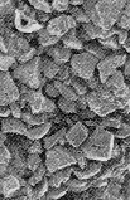 These types of environmentl variability patterns
can be interpreted from a series of field and lab studies discussed earlier.
Examples of changes in an ecosystem can be divided into three groups:
These types of environmentl variability patterns
can be interpreted from a series of field and lab studies discussed earlier.
Examples of changes in an ecosystem can be divided into three groups:
 These types of environmentl variability patterns
can be interpreted from a series of field and lab studies discussed earlier.
Examples of changes in an ecosystem can be divided into three groups:
These types of environmentl variability patterns
can be interpreted from a series of field and lab studies discussed earlier.
Examples of changes in an ecosystem can be divided into three groups:
- short term; seasonal, repetitive variability;
- long-term variability/change;
- non-cyclic change.
(agglutinated forminifera close-up - below)
 Example of short-term seasonal variability:
Example of short-term seasonal variability:
Perhaps the most important discovery is the deep sea experiencing seasonality.
Until recently it was commonly believed that the deep sea was a very stable environment with no signs of environmental variability.
However, bottom photography has shown that there is quite often a large amount of bioturbation creating microhabitats. This provides a scope forpatchiness in meiofaunal distribution.
The following conclusions were determined after observing short-term seasonality:
- There is considerable variability from one
season to the next.
- The pattern of variability does not necessarily
repeat itself precisely from year to year.
- Variability affects the dominant species,
and also species diversity.
Therefore, studies in this area provide a baseline
from which to evaluate long-term environmental change.